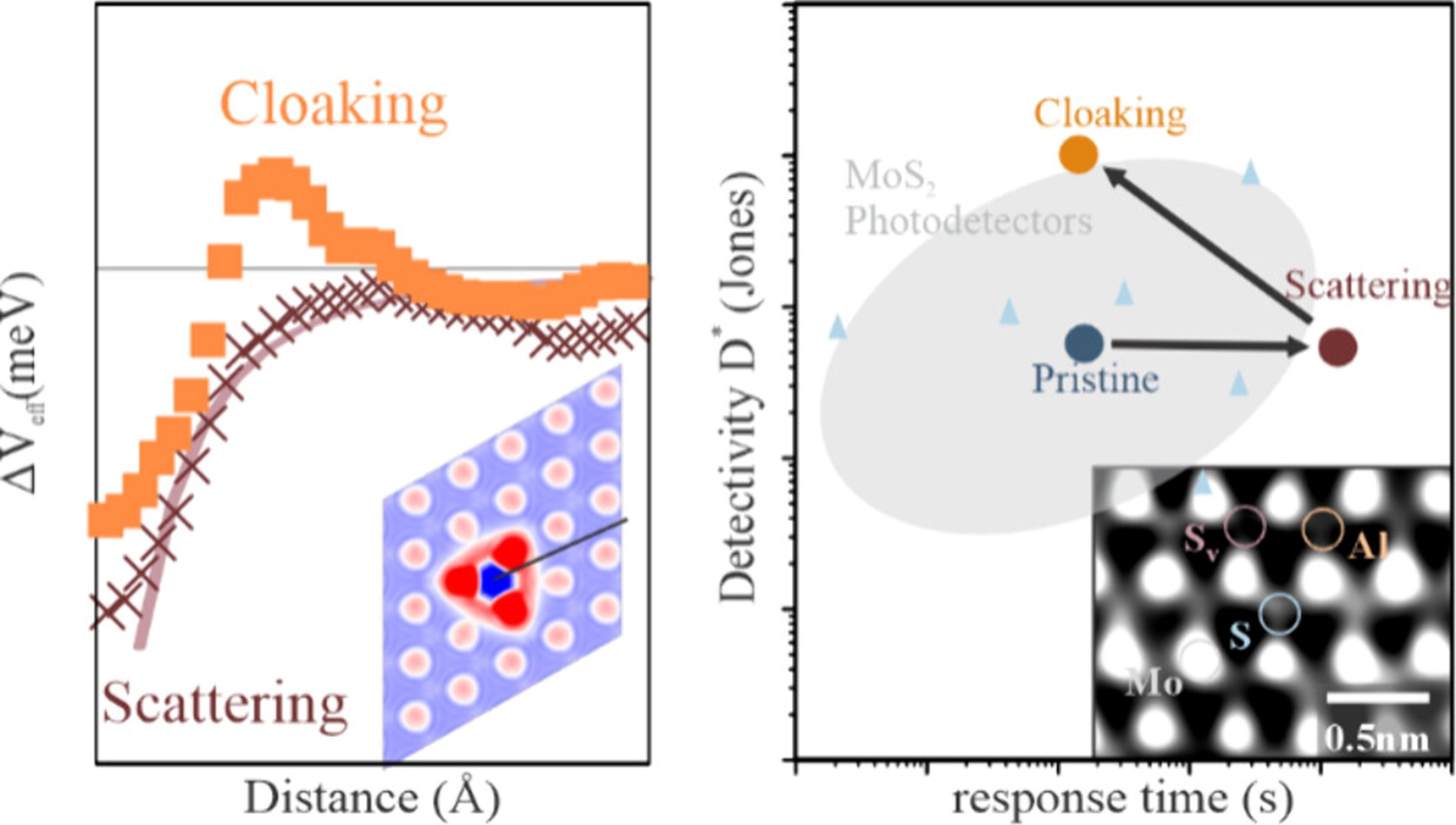

Electron Cloaking in MoS2 for High-Performance Optoelectronics (Yu-Xiang Chen in Prof. Ya-Ping Hsieh’s group)
Defects in two-dimensional (2D) materials represent both challenges and opportunities to their optoelectronic performance. While defects limit the carrier mobility in transistors through increased charge scattering, they also enhance 2D material functionality in sensors. Electron cloaking, a process that reduces Coulomb scattering via localized electron–defect interactions, has recently been shown to mitigate the performance degradation of bulk semiconductors in the presence of defects. We demonstrate the realization of electron cloaking in 2D materials through the metal decoration of defects. Sulfur vacancies were introduced in MoS2 and selectively decorated with aluminum using atomic layer deposition. Theoretical and experimental characterization demonstrate the suppression of electronic scattering through localized interactions. Optoelectronic measurements reveal a significant improvement in carrier mobility and lifetime, highlighting the effectiveness of the cloaking mechanism. Our findings open a route independently to maximize performance and functionality of optoelectronic devices, which is illustrated by the realization photosensors with unprecedented sensitivity and speed.
(This work has been published in Nano Lett. 2025, 25, 23, 9463–9469)



